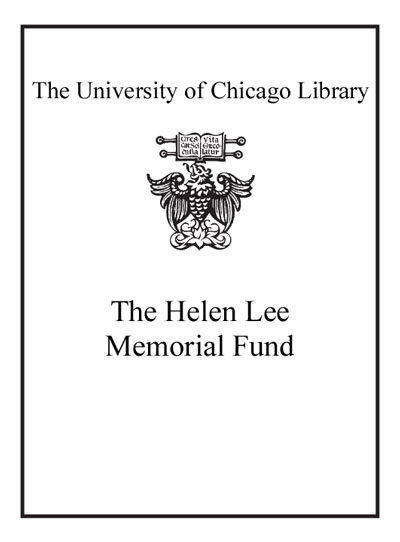Review by Choice Review
Some of this two-volume set's material appears in Oxford Biblical Studies Online (CH, Sep'09, 47-0021), but these print volumes present in-depth coverage of the Bible and archaeology, aiming at a "new potential for rapprochement" between the two, wherein "the pattern of social organization generated by archaeology acts as critical context for the scholarly reading of any biblical text." Two helpful innovations stand out. First, the volumes place social-historical entries alongside archaeological sites/regions; second, the entries spread geographically into the wider Mediterranean world (beyond the Near East) and chronologically into Hellenistic/Roman times. Consistently arranged entries on archaeological sites/regions offer an introduction, brief excavation history, and summary of the occupational history. Final observations usually relate the material to the biblical text. An up-to-date bibliography, often helpfully annotated, follows. Social-historical entries follow a more thematic format. Brief cross-references are included.Since entries divide according to the Bronze/Iron Ages in the ancient Near East, and by the Hellenistic/Roman periods, the Persian period often is shortchanged. Yet it was a time for the collection and editing of much of what becomes the Old Testament/Hebrew Bible. Important sites (e.g., Mount Gerazim) are omitted; entries addressing epigraphy and seals, for example, would have helped accomplish the set's objective. Overlap is evident in some social-historical entries (e.g., between families, marriage, and stages of life). Perhaps most seriously, the encyclopedia moves, against its stated purpose, toward older "biblical archaeology" that correlated archaeological sites with a "specific event of the biblical text," particularly in Bronze/Iron Age entries that may relate to an ancient Israelite "united Monarchy." Additionally, area editors seem to have chosen writers sympathetic to their positions. Despite these reservations, this set provides a useful entry into the changing field of the Bible and archaeology for students, scholars, and others. Summing Up: Recommended. Lower-division undergraduates and above; general readers. J. W. Wright Point Loma Nazarene University
Copyright American Library Association, used with permission.
Review by Booklist Review
Most people reaching for a reference work with Bible in the title will likely be looking for help with biblical understanding. It should be made clear that this impressive set is not a Bible student's work but an archaeologist's. The primary focus of the work is on places each one with some kind of tie-in with scripture (both Old and New Testaments). There are only 70 A-Z places, but each one receives a surprisingly in-depth treatment. In the 11-page entry for Galilee, for example, no fewer than 14 time periods are covered in chronological order, including several Bronze and Iron Ages, and a couple (each) of Hellenistic and Roman periods. Other obvious place entries include Corinth, Egypt, Ephesus, Jericho, Jerusalem, Rome, and Qumran. Interspersed with the places are ample topical entries, covering art, dress, gender, music, and religion in the Jewish and Roman worlds. Only a handful of scripture references are cited, potentially leaving the average Bible student wondering, What exactly should I do with this information? One thing is certain, the work provides no proof in general of such biblical events as Noah's flood or the fall of Jericho in fact, these issues are largely ignored. Moderate-length bibliographies accompany every article. There are few black-and-white photographs and illustrations scattered throughout.Strengths and weaknesses aside, this work should be kept in its proper context. According to the publisher, this 2-volume set is an early installment in a lengthy series (proposed 12 volumes). Each component part of the series intends to explore the Bible from a different angle. The archaeological angle is presented here in a way that is tailor-made for academic libraries.--Osburn, Wade Copyright 2010 Booklist
From Booklist, Copyright (c) American Library Association. Used with permission.
Review by Library Journal Review
This latest installment in the series fully lives up to the standards readers have come to expect from Oxford University Press titles. Master (archaeology, Wheaton Coll.), field director for the Leon Levy Expedition to Ashkelon, has assembled a contributor list that forms a "Who's Who" of world-renowned archaeologists and biblical scholars, contributing articles in their areas of expertise. Their approach is to use archaeological evidence to provide context about the lives and culture of the writers of the biblical texts, not to reconstruct textual history or to link individual finds to specific passages. The 130 signed, alphabetically arranged articles cover individual archaeological sites, regions, and general topics such as material culture; each is followed by a bibliography and cross-references. Black-and-white illustrations accompany the pieces where needed, and a comprehensive index helps locate subject matter. The articles are written for a general audience, but those unfamiliar with archaeological practice might find it dense. VERDICT This excellent survey of biblical archaeology will be useful for any researcher interested in the topic. It is too specialized for smaller public libraries but should be considered for larger public research institutions, college and university libraries supporting archaeology departments, and theology libraries interested in biblical scholarship.-Amanda K. Sprochi, Univ. of Missouri-Columbia (c) Copyright 2013. Library Journals LLC, a wholly owned subsidiary of Media Source, Inc. No redistribution permitted.
(c) Copyright Library Journals LLC, a wholly owned subsidiary of Media Source, Inc. No redistribution permitted.
Review by Choice Review
Review by Booklist Review
Review by Library Journal Review

